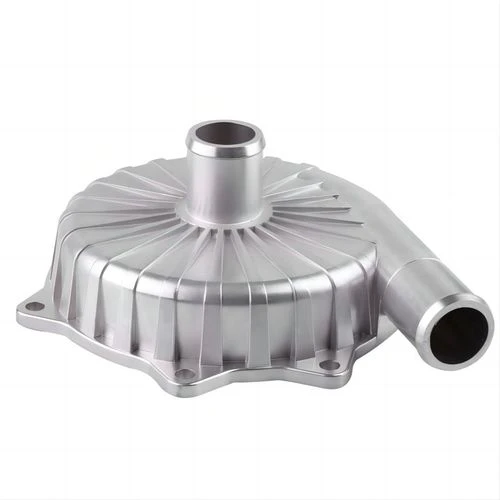ultra precision machining
Ultra Precision Machining The Next Frontier in Manufacturing
In today's rapidly evolving technological landscape, the demand for precision in manufacturing has reached unprecedented heights. Ultra precision machining (UPM) has emerged as a crucial solution to meet these stringent demands. This advanced manufacturing process is characterized by its ability to produce components with exceptionally tight tolerances, often measuring in the micrometers or even nanometers. As industries continue to innovate, understanding UPM's underlying principles, applications, and benefits becomes essential.
What is Ultra Precision Machining?
Ultra precision machining involves techniques and tools that allow manufacturers to create parts with extremely high accuracy and surface finish. This process incorporates a range of technologies, including laser machining, ultra-precision grinding, and micro-milling. The core objective is to achieve dimensional accuracy within +/- 1µm and surface roughness in the nanometer range. Achieving such precision is not merely an engineering challenge; it often requires a confluence of sophisticated machinery, advanced materials, and innovative techniques.
The Techniques Behind UPM
Several key techniques underpin ultra precision machining. Diamond turning is one of the most notable methods, where a diamond-tipped tool removes material from a workpiece at a rate of micrometers per cut. This process is particularly revered in the production of optical components, such as lenses and mirrors, where surface finish quality is paramount.
Another critical technique is ultra-precision grinding, which employs diamond grinding wheels to achieve fine tolerances and excellent surface quality. This method is predominantly used for hard materials, making it ideal for parts in the aerospace and automotive sectors.
Micro milling, on the other hand, utilizes small, rotary cutting tools to produce intricate parts with complex geometries. This technique has gained traction in the electronics industry, where the need for small-scale, highly detailed components is essential.
Key Applications of UPM
ultra precision machining

Ultra precision machining finds its place in several cutting-edge fields. One of the most significant applications is in the aerospace industry, where components must withstand extreme conditions and maintain exact specifications. For instance, turbine blades and critical engine components require ultra-precise machining to ensure efficiency and performance.
The pharmaceutical and medical device industries also rely heavily on UPM
. Surgical tools, implants, and diagnostic equipment must meet stringent regulatory standards, necessitating the accuracy provided by ultra precision machining.Moreover, the electronics sector has embraced UPM to manufacture high-density circuit boards and precision components for devices ranging from smartphones to advanced computing systems. Here, the precision provided by various UPM techniques can significantly impact the performance and reliability of electronic devices.
Advantages of Ultra Precision Machining
The benefits of ultra precision machining are manifold. First and foremost, it enhances product quality, reducing the need for secondary processes such as polishing or finishing. This capability results in shorter lead times and lower production costs, making UPM a cost-effective choice despite initial investments in technology.
Additionally, UPM contributes to sustainability in manufacturing. By minimizing material waste through precise cutting and achieving high-quality finishes, manufacturers can reduce the environmental footprint of their operations.
Finally, as industries increasingly strive for miniaturization, ultra precision machining becomes pivotal in creating smaller and lighter components without compromising on performance. This capability opens new avenues for innovation, as engineers can explore designs that were previously deemed impractical.
Conclusion
In summary, ultra precision machining represents a vital component of modern manufacturing. As industries grow more demanding in their quest for accuracy and performance, UPM provides the tools necessary to meet these challenges head-on. Its applications extend across various fields, from aerospace to electronics, underlining its versatility and importance. As the future unfolds, ultra precision machining will undoubtedly continue to push the boundaries of what is possible in manufacturing, fostering innovation and excellence in every sector it touches.
-
OEM Sand Cast Pump Valve Fittings - Baoding Hairun Machinery And Equipment Trading Co., Ltd.NewsJul.31,2025
-
OEM Sand Cast Pump Valve Fittings - Baoding Hairun | Precision Engineering, CustomizableNewsJul.30,2025
-
OEM Sand Cast Pump Valve Fittings - Baoding Hairun Machinery And Equipment Trading Co., Ltd.NewsJul.30,2025
-
OEM Sand Cast Pump Valve Fittings - Baoding Hairun Machinery And Equipment Trading Co., Ltd.NewsJul.30,2025
-
OEM Sand Cast Pump Valve Fittings - Baoding Hairun Machinery|Precision Engineering&Fluid ControlNewsJul.30,2025
-
OEM Sand Cast Pump Valve Fittings - Baoding Hairun Machinery And Equipment Trading Co., Ltd.NewsJul.30,2025















